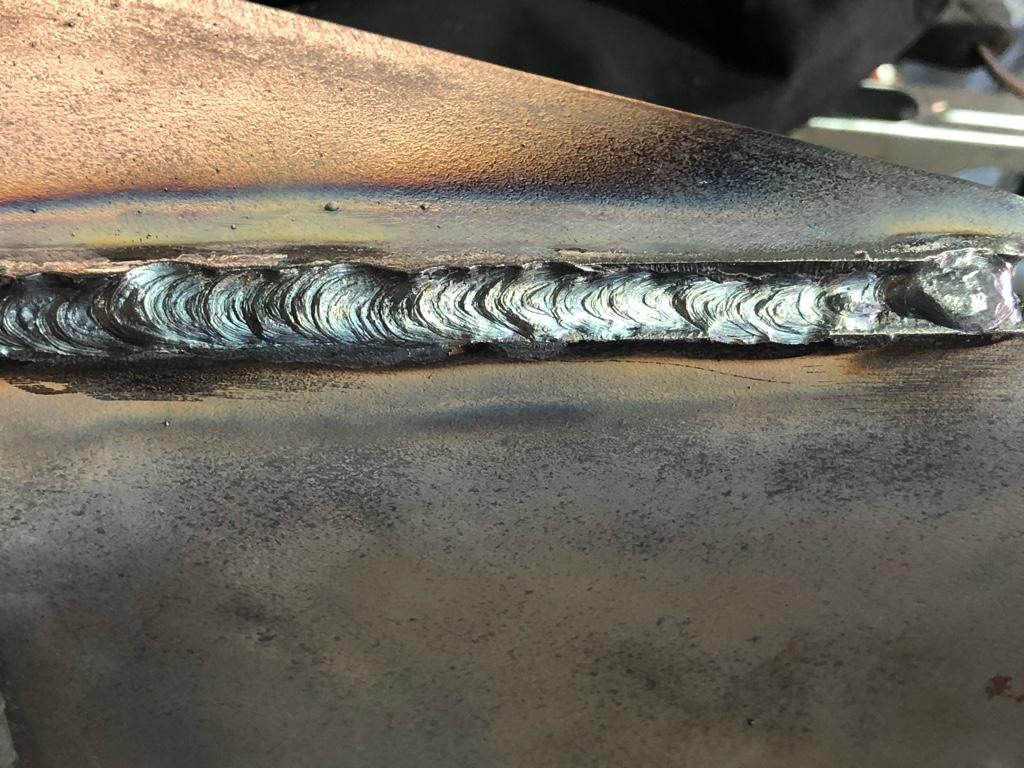Your Total Handbook to Preventing Weld Undercut Like a Pro
Your Total Handbook to Preventing Weld Undercut Like a Pro
Blog Article
Understanding the Causes and Solutions for Undercut Welding in Metal Fabrication Processes
In the world of steel manufacture procedures, the incident of undercut welding presents a considerable difficulty that demands an extensive understanding of its causes and viable solutions. The intricate interaction of numerous aspects throughout welding operations can lead to this undesirable sensation, influencing the structural integrity and overall top quality of the bonded joints - Preventing weld undercut. By exploring the origin of undercut welding and discovering efficient remedial measures, makers can raise the standard of their workmanship and make certain the manufacturing of flawless steel elements
Common Sources Of Undercut Welding
Regularly forgotten in steel fabrication, undercut welding occurs due to various elements that demand careful interest and experience to be properly mitigated. Additionally, incorrect welding methods, such as utilizing the incorrect welding angle or travel speed, can likewise contribute to damage formation. The choice of welding parameters, such as voltage, current, and wire feed rate, plays a substantial duty in the event of undercut welding.
Influence of Incorrect Welding Parameters
Imprecise welding criteria can dramatically jeopardize the integrity and quality of bonded joints in steel construction processes. The impact of incorrect welding criteria shows up in different ways, causing architectural weaknesses and defects in the bonded parts. One important element affected by inappropriate welding specifications is the penetration deepness of the weld. Inadequate heat input as a result of low welding currents or excessively high traveling speeds can result in poor fusion in between the base steels, resulting in insufficient joint penetration and weakened bonds. Alternatively, extreme heat input brought on by high welding currents or slow traveling speeds can lead to burn-through and too much support, producing a weak and unsteady weld structure. Furthermore, incorrect specifications such as improper voltage setups or incorrect electrode angles can add to erratic weld bead accounts, lack of blend, and increased opportunities of defects like damaging. Therefore, careful attention to welding specifications is extremely important to guarantee the manufacturing of top quality welds with the wanted mechanical buildings and structural stability.
Result of Improper Lantern Angle
Improper lantern angle in welding operations can considerably impact the top quality and stability of the final weld joints in metal manufacture procedures. Undercutting is an usual welding flaw where a groove develops along the weld toe, weakening the joint and endangering its architectural integrity.
A lantern angle that is as well steep can bring about not enough penetration, incomplete blend, and enhanced spatter. On the other hand, a lantern angle that is as well shallow can cause extreme penetration, burn-through, and distortion of the base product. Preventing weld undercut. Proper lantern angle is essential for guaranteeing regular weld high quality, toughness, and appearance
To pop over to these guys avoid damaging and other issues triggered by improper lantern angles, welders need to be trained to keep the appropriate torch angle throughout the welding procedure. Routine tracking and adjustment of lantern angles during welding can aid attain audio welds with marginal flaws.
Role of Inadequate Welding Strategies

One more aspect of inadequate welding strategies is inappropriate weld prep work. Insufficient cleaning of the base metals, wrong joint layout, or inadequate edge preparation can all add to damage welding. Insufficient shielding gas coverage or making use of the wrong type of gas can result in insufficient combination and the development of undercut flaws.
To deal with the role of poor welding methods in metal manufacture processes, it is important to give extensive training for welders. Proper education and learning on welding parameters, joint prep work, and protecting gas option can assist prevent undercut welding and make certain premium welds in metal construction projects.
Efficient Solutions for Undercut Welding
Addressing undercut welding in steel fabrication needs implementing reliable solutions to boost weld quality and architectural honesty. One of the key solutions to deal with undercut is to adjust welding specifications such as voltage, existing, and travel rate to make certain appropriate warmth input and fusion. By fine-tuning these settings, welders can protect against excessive melting of the base metal and filler product, reducing the probability of undercut development.
Additionally, appropriate joint prep work is crucial in stopping undercut. Making certain clean base metal surface areas cost-free of contaminants and utilizing the proper bevel angle can aid promote better weld penetration and minimize the threat of undercut - Preventing weld undercut. Employing suitable welding techniques, such as weaving or oscillating the lantern, can additionally aid in distributing heat Recommended Reading evenly and filling up the weld joint effectively, decreasing the possibility of undercut defects
Additionally, choosing the right welding consumables, consisting of electrodes and filler steels, is necessary in minimizing undercut. Making use of products with ideal chemical make-ups and mechanical residential or commercial properties can contribute to accomplishing sound welds with minimal undercut. Regular evaluation and quality assurance measures should also be implemented to detect and address undercut issues promptly, making sure the general stability of fabricated metal parts.

Verdict
To conclude, recognizing the reasons and services for undercut welding in metal construction processes is critical for attaining top quality welds. By addressing typical causes such as incorrect welding criteria, improper torch angle, and poor welding methods, welders can avoid undercutting and make certain strong, durable welds. It is vital to take notice of these aspects and execute reliable options to improve the total welding process and end product quality.

Report this page